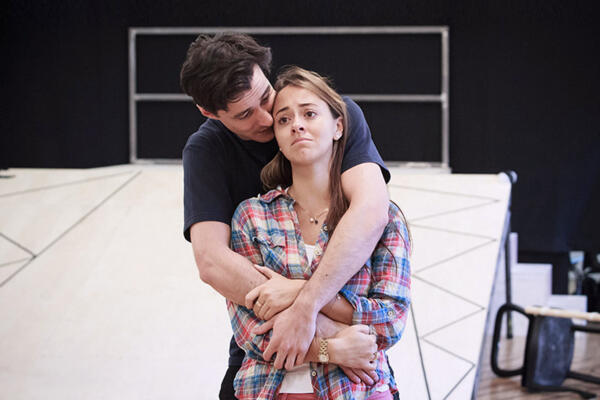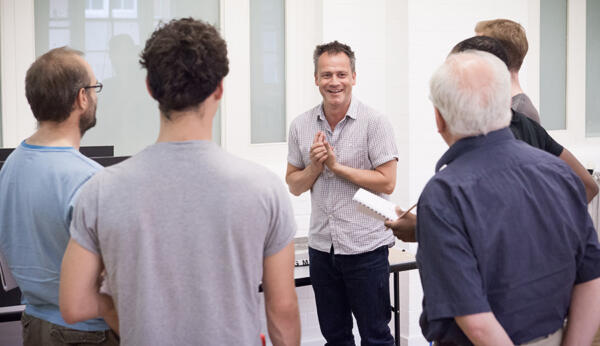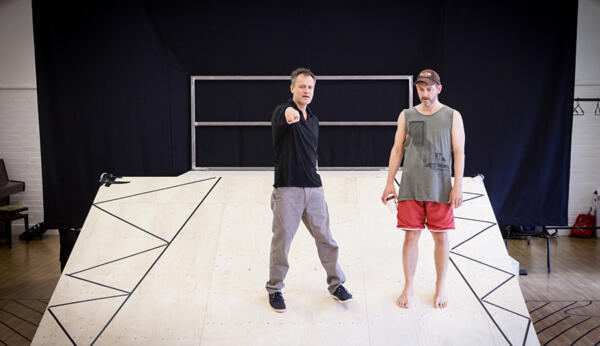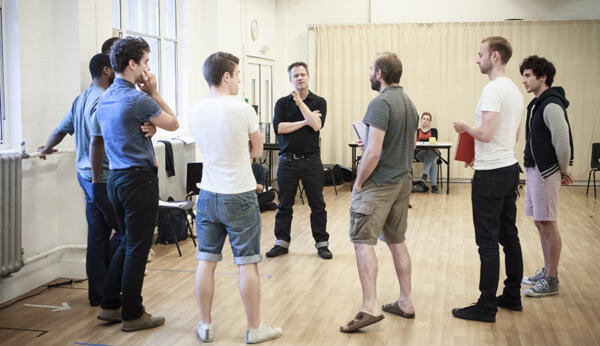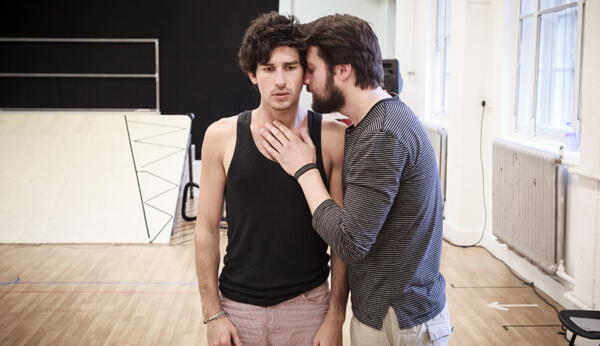A Midsummer Night's Dream | Inside the Rehearsal Room
A Midsummer Night's Dream– Week Two, Day Three
Today the cast are working on Scene Eight, a short scene in which Nick Bottom – no longer a donkey – is reunited with the other Mechanicals. ‘Let’s see where we got to at the end of last rehearsal,’ says Michael. ‘We’ve only done it once so I’ll stop you if you go off-piste.’
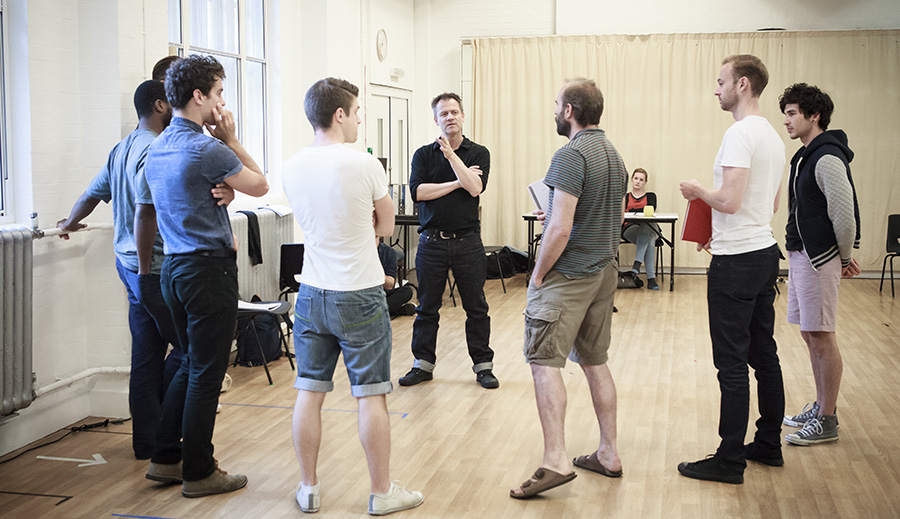
He begins by clarifying the facts: ‘Where are you?’ Scene Eight appears to start mid-conversation, Michael suggesting the cast, ‘Think of it as being discovered already on, cloth out’. The scene presents a number of challenges, leading him to appeal to the actors: ‘Can you help this scene a little bit? What’s interesting is that Shakespeare doesn’t help us here – he leaves us to decide. Are they upset about not being able to stage the play? Or about the loss of Bottom?’ Michael considers this. ‘We need to imbue it with the loss of a friend as well as the play.’
Reading ahead, he queries the text, in particular an exchange between Peter Quince and Francis Flute: ‘I do maintain that these lines have been badly attributed by the compositor. They don’t make sense.’ He re-attributes the dialogue, explaining, ‘We’re publishing this script so we need to get all these changes in’.
They run the scene, following which Michael says, ‘Let’s just look at that first part again before David comes on’. There’s a chair on stage, which Richard Dempsey as Quince has been using. ‘I’m not a hundred per cent buying the chair,’ says Michael. ‘Just use it as an anchor.’ He recommends Peter stand behind it or lean against it but avoid actually sitting on it.
Craig Vye, playing Snug the Joiner, enters and delivers his line, ‘Masters, the Duke is coming from the temple…’ Michael responds, ‘Don’t make it an energised entrance’, suggesting it’s more reflective, as Snug thinks his way through what he’s just witnessed and its implications. ‘You’ve computed it. You’ve taken it in, internalised it and now it’s happened,’ observes Michael, asking Craig to keep the line alive and active instead. ‘It’s happening.’ He looks again at the start of the line: ‘ “Masters…” Now, one thing there – you could have good news.’
Michael listens keenly to the cast’s delivery of the text, ensuring its clarity. ‘Do you know what you’re saying there?’ he asks one actor, seeking to clarify the meaning of a line. ‘The bit that’s not clear…’ And together they’ll unlock it, Michael supporting in filling in the gaps – ‘We’re missing a few mini-words, which we need to put in to help it out.’
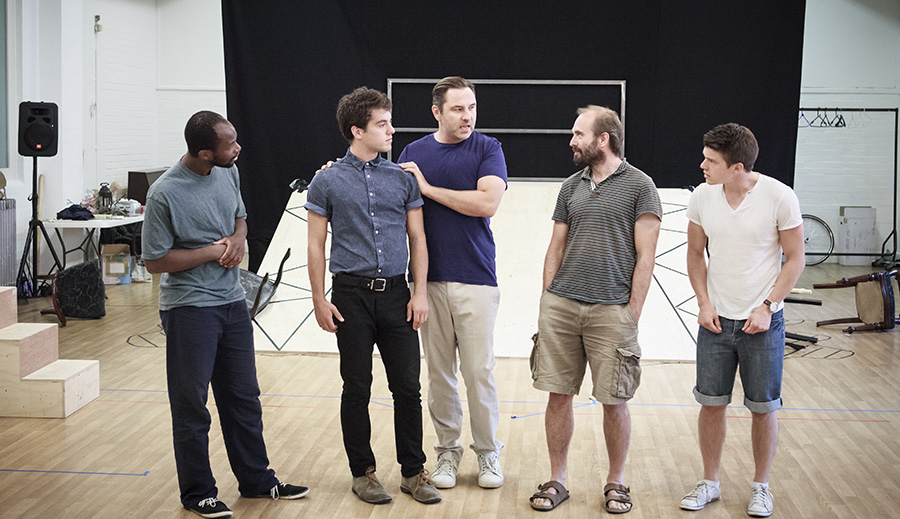
Next, he considers Bottom’s reunion with his fellow amateur actors, especially Quince, and his imparting of the news that their play has been chosen to be performed at Theseus’ wedding. ‘It’s hard,’ reflects Michael. ‘The responsibility of it shouldn’t all fall on David.’ He focuses on Bottom’s revelation, ‘Our play is preferred’. ‘There’s excitement, but now you actually have to do it. It’s a difficult way to end the scene. Although having to now do the play adds an energy, a kick to the scene – they’re back on track. What helps us, the audience, is that we know that for Nick Bottom the play is everything.’
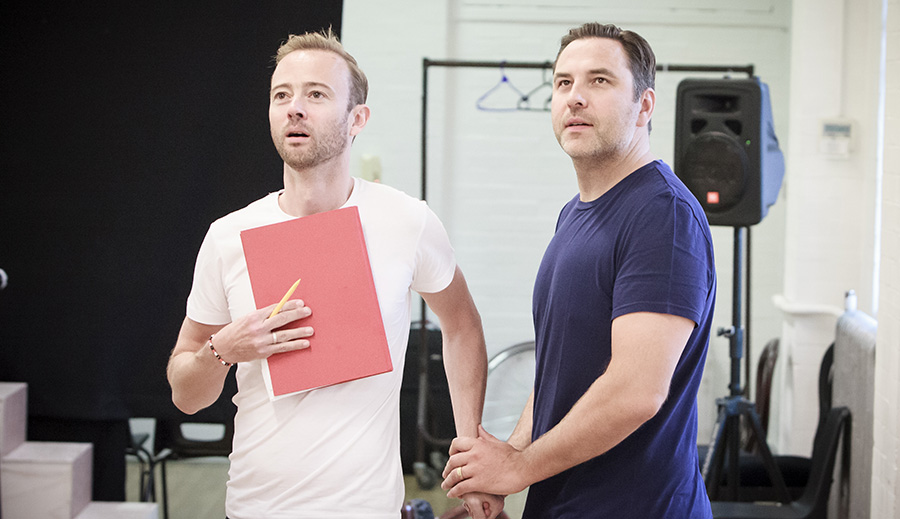
Michael asks them to run the scene again, cuing them with his usual, ‘Here we go…’ Afterwards, reflecting on the moment when Bottom is revealed, he wonders whether ‘we’ve hijacked our own scene by having such a big entrance’? He’s more convinced by its conclusion – ‘An exit absolutely activated by the energy of going. Improvise all the way, going off chattering.’ Michael returns to the central relationship of Bottom and Quince: ‘Maybe we should afford ourselves a slight reunion there? Just to button this scene.’ There’s a suggestion that Richard take David’s hand. While it works, Michael maintains his usual vigilance on tone and emphasis – ‘It’s not too much?’
After a short break for the cast, Ben Wright rejoins rehearsals. He starts by teaching the Mechanicals a line dance to be incorporated later in the action. The music comes from an intro to a Lonnie Donegan song. ‘Can I make some little requests?’ asks Michael, looking on. ‘I like it that they don’t go too far downstage.’ He prefers to have the group in one line and for them to exit dancing stage-right. Michael makes a note for designer Christopher Oram, to clarify that the onstage cassette-player isn’t anachronistic and dates from the correct period – the 1970s.
The focus then shifts to the moment in Scene Five where Bottom is transformed into a donkey, the Fairies dancing around him. During this change, David’s costume is augmented with a pair of long, drooping ears and protruding false teeth. In his movement, Ben suggests David ‘lead with the teeth’, demonstrating this. Every detail of the transformation is considered – the ‘grotesque braying’ of a donkey, the backwards kick of its hind leg. Michael highlights the need to decide which words in Bottom’s speech trigger his braying and ‘hee-hawing’.
Christopher and Poppy Hall, the Costume Supervisor, join the rehearsal to observe the developing movement and see what’s required of Bottom’s costume. As they haven’t started making it yet, they can adapt it accordingly. Watching the scene, Michael encourages the cast, ‘That’s nice, it’s a good sequence’.
Ben’s keen to include the Fairies as much as possible in the transformation and suggests ‘giving more value’ to the ritualistic elements of the scene – for example, the Fairies placing a noose over Bottom’s head then leading him around the stage. (This leads to a separate discussion about the prop noose in terms of health and safety.) The Fairies also echo Bottom’s ‘hee-hawing’. ‘It’s exciting to be part of the transformation,’ comments Michael. ‘He’s making you all a donkey!’ The actors are encouraged to find all the nuances within the scene. ‘There’s a little more menace to it,’ says Michael, ‘and something slightly sexual in the change that comes over Bottom.’
Following this, Ben works with Michael and the cast to revise and rehearse smaller moments of movement, in particular the transition between scenes. Ben strives for accuracy within all the routines, to aid the actors in committing sequences to memory – ‘I feel like we should really nail the ending there.’
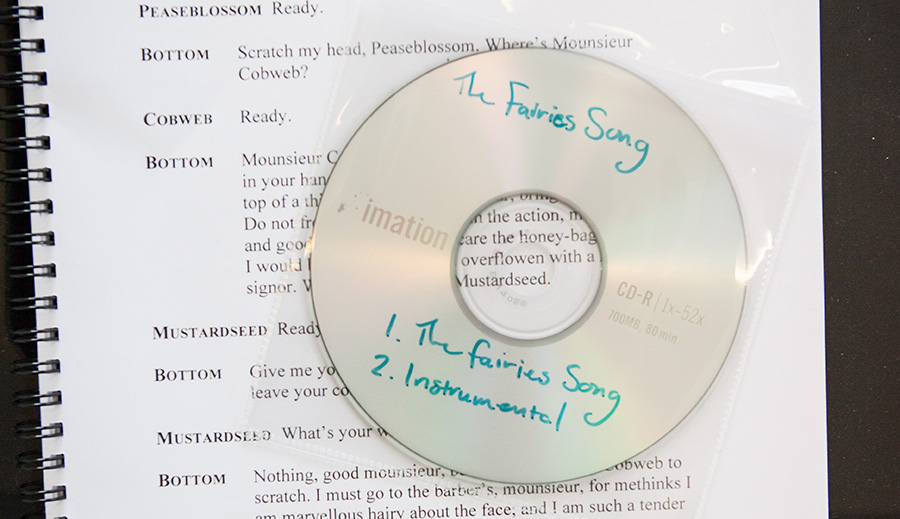
They work on the song again. ‘It’s a stronger start when everyone sings together,’ observes Ben. He calls out notes as the cast run the sequence: ‘Keep the sensitivity through the feet as well… A bit more commitment, even if you mess it up.’ Afterwards, Michael comments: ‘I think it can be richer this sound. When you know your moves you can fill it more.’ Ben adds to this – ‘Explore the range of the physical and then, once it’s in the muscle-memory, come back into the vocal.’
